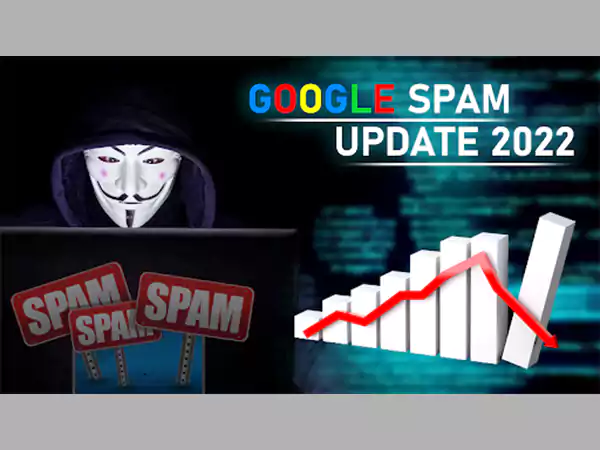Google’s Spam Update 2022: Purpose, Fixes, and More
If you find yourself looking for ways to get spared from Google for its Google Spam Update 2022, you’re not alone in this (quite literally!).
There isn’t a big percentage of creators or professionals who weren’t hit by Google’s Spam Update wave, and if you’re one of them, consider yourself lucky.

Google has confirmed the rollout of a spam-related algorithm update on October 19, 2022. The update is reportedly targeted for scheming out the spam content which is floating around unnecessarily on Google.
It is an update that all website owners and other content creators need to pay attention to and take seriously.
I act like I am okay but deep down Google Spam Update has finished me…
— Benjamin Kesse (@Nana_kesse1) October 30, 2022
Many were devastated by Google’s Spam update, as you can see in the Tweet above from an affected user who is looking for ways to stop the update from affecting their website. So let’s dig deep into its details and get what needs to be done before it’s your turn to get marked by Google with its spam update!
Google Spam Update: October 2022
So readers, there are no doubts or second guessing for what the Google Spam Update has done to nearly every other website on the face of the internet! And if you’re also bugged by this update, we are here to help you out and keep you updated with the necessary information!
Today we released the October 2022 spam update. Find out more about spam updates at https://t.co/XthD5GF06M . We’ll update our ranking release history page when the rollout is complete: https://t.co/sQ5COfvo3J
— Google Search Central (@googlesearchc) October 19, 2022
To improve the search results and keep them useful, Google rolls out spam updates on a regular basis. If you may ask why this is because if the users go to Google and the search results are filled with spam, they will have a terrible experience using Google, and might even reconsider using it.
And that is absolutely not what a mega platform like Google would want. Google aims to provide relevant and reliable information on its billions of pages and help people find what they are looking for in its index.
With the Google Spam Update, there were a lot of sites that were badly affected, so now let’s get started with the update’s motto, fixes, and more.
Purpose of Google Spam Update
Google always has its own reasons for releasing new updates. And its priority with the recent algorithm update is removing spam from its entire base. After July 2021’s link spam update, Google has now come out with Google Spam Update. And here, we have gathered some important points which led to many sites’ ranking and traffic getting impacted badly.
- Keyword Stuffing: Even though it has been a very long time since people realized keyword stuffing doesn’t help much, shockingly around 3.89% still did it. Keywords surely help a lot in the content, but one needs to understand keywords and their types. Keyword stuffing makes it harder for the reader to understand the content. So in conclusion, stop doing it!
- Thin Content: Google’s Spam Update isn’t only about spam, it also affected the websites which had thin content, i.e., content that is not rich in quality. So if you finish reading it, irrespective of the word count, you won’t get any fruitful outcome out of it or what you may have come looking for.
- Meta-tags Poorly Created: There were a lot of websites that had duplicate meta tags, which were created for targeting the search engines and not humans. And this affected the pages, thus the websites as well.
- Hacked Content: While many websites were ranking on the top organically with a huge amount of traffic, there were some that had content that they didn’t own. So even if they somehow managed to stay safe from copyright, the Google Spam Update detected the loopholes.
- Malware and Malicious Behavior: In the internet world of racing SEO, there are various websites that trick users into giving their personal information or installing dangerous malware applications. So such websites with malicious behavior were impacted as well.
These were some vital points that led to the impact of Google Spam Update on many websites. There were other points as well as Cloaking, User-generated Spam, Scraped content, Sneaky redirects, Link spam, and Machine-generated content, User-generated spam along with other points that also got sites targeted.
Now, let’s read in detail about Google Spam Update’s impact on websites.
Google Spam Update’s Impact on Websites
It is undoubtedly very important to note that Google’s spam updates can affect any website’s ranking in search results or even remove it completely from the Google Index. Furthermore, there are many websites that are inadequately secured and thus, end up serving spam to visitors, falling prey to spam hacks. And therefore, this can have a big impact on the site’s ranking.
As per research, it has been indicated that Google Spam Update October 2022 mainly targeted those websites which had breached the spam policies of Google. This included poorly created meta tags, keyword stuffing, and thin content. Hence, leading to huge drops in keyword ranking and traffic. Among different categories of websites, compared to products-oriented sites, the news, and sports websites felt the biggest impact for content. And this was followed by technical, arts, and entertainment websites.
As per Google, if your site’s ranking is affected after Google’s Spam Update 2022, you are advised the following:
“If sites see a change after a spam update should review Google’s spam policies and ensure compliance with those. Violation of these policies may result in a lower ranking or not appear in results at all. Making changes may help in improving if our automated systems notice over time that the site complies with the spam policies.”
And if you are also affected by the update, make sure to visit Google Search Central for this update.
Fixes for Google Spam Update
There are many ways to get your site to rank on the first page of Google. So since many are wondering where and what went wrong, we are here with some information. By the looks of it, there are some points that left a major impact on many websites in the update. So what should one do about it now and recover their website? Let’s find out.
The google spam update hit my site so bad, 100% loss in traffic. Genuine site, all content was written by expert in that niche. No link building. But we got hit so badly. Is there anyway we can recover from this hit? Any help will be greatly appreciated.
— Netpreneur (@_netpreneur_) October 24, 2022
So basically, as discussed earlier, the Google Spam Update has only hit those websites which had copied low-quality content with keyword stuffing, poorly created meta links, or AI-generated content.
However, if you think that your website didn’t have any of these, and it was still influenced by the update, then there are some points that you need to focus on, for the recovery.
- Don’t provide poor-quality content.
- Create meta tags with efficiency.
- Don’t do keyword stuffing.
- Make sure that you’re not adding spam links.
So these were some important points from the update, as much as we have analyzed. If you’re sure that you aren’t following any of the patterns mentioned above, your site is good to go.
FAQs
- What is the Link update?
Google announced a new algorithm update on July 26th, 2021 which was about a “link spam update.” The update was targeted at the identification of link spam and then nullifying them.
- Can you get off the Google spam list?
Yes, there are some ways to get off the Google spam list:
- Clear all the spam traps and bounces.
- Make sure you’re using enough text in your email.
- Do not email any non-engaged users from your list.
- Request Google to reconsider here.
- Get a new IP Address.
- What is a Google search scam?
In terms of Google, there is a strict definition of what it considers spam – low-quality sites with poor or no content that are used for phishing scams and fooling people into installing malware and providing their personal information.
- How can I know if my Google Admin is spam?
The process for finding out if your Google Admin is spam is pretty simple:
- Sign in to your Google Admin Console, using your administrator account.
- Then go to Menu > Security > Security Center > Dashboard >.
- After that, scroll down to Spam Filter < All, Spam Filter < Phishing. And to do the same for Malware, Spam Filter < Malware < View Report.
For more details, you can go to the Google Support page.










